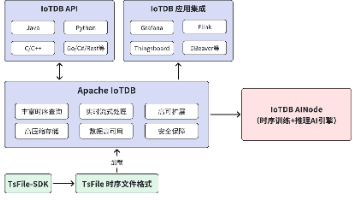浙大数据结构:02-线性结构2 一元多项式的乘法与加法运算
浙大数据结构MOOCC++代码实现。附录:线性表的定义与操作
·
02-线性结构2 一元多项式的乘法与加法运算
这道题真是太逆天了,写费劲,调试更费劲。下面我来说明一下思路。
1、主函数
主函数比较简单,调用函数构造两个链表,然后再调用相乘、相加、输出函数。
int main()
{
List l1,l2,ladd,lmulti;
l1=Read();
l2=Read();
lmulti=Mult(l1,l2);
Print(lmulti);
ladd=Add(l1,l2);
Print(ladd);
return 0;
}2、结构体定义、Read()函数
我们采用链表来实现:系数,指数,指针
typedef struct node* List;
struct node{
int pre; //系数
int up; //指数
List next; //指针
};Read函数也较容易,此处采用尾插法
List Read()
{
int num;cin>>num;//有多少结点
List L=new node;L->next=NULL;//初始化头节点
struct node h;h.next=L; //保存头节点,用来返回
//L指针用来遍历链表将结点连起来,所以会往后移
for(int i=1;i<=num;i++)
{
List t=new node; //创建新结点
int p,u;cin>>p>>u;
t->pre=p;t->up=u; //初始化新的系数、指数
t->next=L->next;
L->next=t;
L=L->next; //往后遍历继续创建
}
return h.next; //返回头节点
}3、Add函数、newlink函数
这里头我们实质想实现Add函数,由于中间有的代码重用了,所以我们又写了一个newlink函数来减少代码行数。
先说明一下newlink函数是干嘛的,这里头是把结点p接到L的后面,这个步骤在Add函数里面多次出现。L指向链表的最后一个结点,新结点会被接在尾部
void newlink(List L,List p)
{ //L后面新接个结点p
List t=new node;
t->pre=p->pre;
t->up=p->up;
t->next=L->next;
L->next=t;
//创建新结点,把p复制过来,接到L后面
}我们来看一下Add函数的实现:
首先新建头节点和保存头结点的指针用来返回,p的话后面随着遍历来移动。
此处我们把相加的结果放在新的一个链表中,不修改原来的两个链表因为后面要用
然后遍历两个链表,把指数大的放前面,指数相等就相加再放进去
最后如果有没遍历完的,把链表接到后面
List Add(List L1,List L2)
{//此处是新建一个链表来保存两个链表的结果
struct node h; //保存头节点,就是为了返回用的
List p=new node;p->next=NULL; //后续p会遍历链表,找不到初始状态了,用h来存初始位置
h.next=p;
L1=L1->next;L2=L2->next;
//L1,L2指向第一个结点
while(L1&&L2)
{ //当两者都没遍历完时
if(L1->up<L2->up)
{ //把大的结点放前面
newlink(p,L2);
p=p->next;
L2=L2->next;
}
else if(L1->up>L2->up)
{ //把大的结点放前面
newlink(p,L1);
p=p->next;
L1=L1->next;
}
else
{ //如果两节点相等就合并
List t=new node;
t->pre=L1->pre+L2->pre;
t->up=L1->up;
t->next=p->next;
p->next=t;
p=p->next;
L1=L1->next,L2=L2->next;
}
}
while(L1)
{ //L1还剩下没遍历完,接到新链表后面
newlink(p,L1);
p=p->next,L1=L1->next;
}
while(L2)
{//L2还剩下没遍历完,接到新链表后面
newlink(p,L2);
p=p->next,L2=L2->next;
}
return h.next; //保存的是头节点,返回相加后的新链表
}4、Mult函数、multi函数
此处也是目的是实现Mult函数,但multi函数这块代码被重用很多次,所以单独写减少冗余。
先讲一下乘法实现思路:
我们选择L2链表,用它的每一个结点与L1相乘,把结果相加(调用Add函数)就行了。
先看一下multi函数:
此处是用small结点与链表L的每一个结点相乘,得到新链表,不修改链表L,我们新开辟空间。
前面几行一样,初始化新的链表,然后进行遍历,将节点相乘存到新链表中
返回新链表的头结点
List multi(List L, List small)
{ //用结点small与链表L相乘
struct node h;
List p=new node;p->next=NULL;
h.next=p;
L=L->next; //前几行代码与前面一样,初始头节点,h存方便返回,p后面遍历
while(L)
{
List t=new node;
t->pre=small->pre*L->pre; //系数相乘
t->up=small->up+L->up; //指数相加
t->next=p->next;
p->next=t;
p=p->next;
L=L->next;
}
return h.next;//返回相乘的新链表
}再来看Mult函数
遍历L2的每一个结点,用他们与L1所有结点相乘。
此处先乘第一个结点,初始化一下p,然后循环遍历,t存当前结点与L1相乘的结果。
将p,t相加,结果赋给p,p就更新为L2前几个结点的与L1相乘的累加和
最后返回p
List Mult(List L1,List L2)
{//链表L1与链表L2相乘
List p;L2=L2->next;//L2指向第一个结点
if(L2) p=multi(L1,L2); //与L1相乘
L2=L2->next;
while(L2)
{
List t=multi(L1,L2); //t来存下一个结点与L1的相乘结果
p=Add(p,t); //将两个结果相加
L2=L2->next;
}
//p由于不断更新现在存的是最终结果
return p; //将两个链表相乘的结果存到新链表中返回
}5、Print函数
print函数先找到第一个系数不为0 的结点,如果遍历完L都没找到,输出0 多项式,否则先输出第一个结点的系数、指数。
注意输出方式,最后输出完不能有多的空格
void Print(List L)
{
L=L->next;//到第一个结点
while(L&&L->pre==0)L=L->next;//找到第一个系数不为0的结点
if(!L) {cout<<"0 0"<<endl;//L遍历完了也没找到,输出0多项式
return ;}
cout<<L->pre<<' '<<L->up;
//此处输出是为了最后输出的结果不能多空格,注意不能多输出空格!!!!
L=L->next;
while(L)
{if(L->pre)
cout<<' '<<L->pre<<' '<<L->up; //系数不为0就输出该结点
L=L->next;
}
cout<<endl;
}六、总结
这道题相当费时,花了不少时间希望我的代码能对大家有帮助。
完整代码如下:
#include<iostream>
using namespace std;
typedef struct node* List;
struct node{
int pre;
int up;
List next;
};
void newlink(List L,List p)
{ //L后面新接个结点p
List t=new node;
t->pre=p->pre;
t->up=p->up;
t->next=L->next;
L->next=t;
}
List Read()
{
int num;cin>>num;
List L=new node;L->next=NULL;
struct node h;h.next=L;
for(int i=1;i<=num;i++)
{
List t=new node;
int p,u;cin>>p>>u;
t->pre=p;t->up=u;
t->next=L->next;
L->next=t;
L=L->next;
}
return h.next; //返回头节点
}
List Add(List L1,List L2)
{
struct node h;
List p=new node;p->next=NULL;
h.next=p;
L1=L1->next;L2=L2->next;
while(L1&&L2)
{
if(L1->up<L2->up)
{
newlink(p,L2);
p=p->next;
L2=L2->next;
}
else if(L1->up>L2->up)
{
newlink(p,L1);
p=p->next;
L1=L1->next;
}
else
{
List t=new node;
t->pre=L1->pre+L2->pre;
t->up=L1->up;
t->next=p->next;
p->next=t;
p=p->next;
L1=L1->next,L2=L2->next;
}
}
while(L1)
{
newlink(p,L1);
p=p->next,L1=L1->next;
}
while(L2)
{
newlink(p,L2);
p=p->next,L2=L2->next;
}
return h.next; //保存的是头节点,返回相加后的新链表
}
List multi(List L, List small)
{ //用结点small与链表L相乘
struct node h;
List p=new node;p->next=NULL;
h.next=p;
L=L->next;
while(L)
{
List t=new node;
t->pre=small->pre*L->pre;
t->up=small->up+L->up;
t->next=p->next;
p->next=t;
p=p->next;
L=L->next;
}
return h.next;//返回相乘的新链表
}
List Mult(List L1,List L2)
{//链表L1与链表L2相乘
List p;L2=L2->next;
if(L2) p=multi(L1,L2);
L2=L2->next;
while(L2)
{
List t=multi(L1,L2);
p=Add(p,t);
L2=L2->next;
}
return p;
}
void Print(List L)
{
L=L->next;
while(L&&L->pre==0)L=L->next;
if(!L) {cout<<"0 0"<<endl;
return ;}
cout<<L->pre<<' '<<L->up;
L=L->next;
while(L)
{if(L->pre)
cout<<' '<<L->pre<<' '<<L->up;
L=L->next;
}
cout<<endl;
}
int main()
{
List l1,l2,ladd,lmulti;
l1=Read();
l2=Read();
lmulti=Mult(l1,l2);
Print(lmulti);
ladd=Add(l1,l2);
Print(ladd);
return 0;
}附录:线性表的定义与操作
顺序表:
#include<stdlib.h>
#include<stdio.h>
typedef struct LNode *List;
typedef int ElementType;
typedef int Position;
#define MAXSIZE 100
#define ERROR -1
struct LNode
{
ElementType data[MAXSIZE];
Position End;
};
List MakeEmpty()
{
List L;
L=(List)malloc(sizeof(struct LNode));
L->End=-1;
return L;
}
Position Find(List L,ElementType x)
{
Position i=0;
while(i<L->End&&L->data[i]!=x)
i++;
if(i>L->End)return ERROR;
return i;
}
bool Insert(List L ,ElementType x,Position i)
{
if(L->End+1>=MAXSIZE)return 0;
if(i<0||i>MAXSIZE-1)return 0;
for(Position p=L->End;p>=i;p--)
L->data[p+1]=L->data[p];
L->End++;
L->data[i]=x;
return 1;
}
bool Delete (List L,Position p)
{
if(p<0||p>L->End)return 0;
for(Position i=p;i<=L->End;i++)
L->data[i]=L->data[i+1];
L->End--;
return 1;
}链式表:
#include<stdlib.h>
#include<stdio.h>
typedef struct LNode *List;
typedef int ElementType;
typedef List Position;
#define MAXSIZE 100
#define ERROR NULL
struct LNode
{
ElementType value;
Position Next;
};
bool init()
{
List L;
L->Next=NULL;
return 1;
}
Position Find( List L,ElementType x)
{
L=L->Next;
while(L&&L->value!=x)
L=L->Next;
if(L)return L;
else return ERROR;
}
bool Insert(List L,ElementType x,Position p)
{
while(L&&L->Next!=p)
L=L->Next;
if(L==NULL)return 0;
List t=(List)malloc(sizeof(struct LNode));
t->value=x;
t->Next=L->Next;
L->Next=t;
return 1;
}
bool Delete (List L,Position p)
{
while(L&&L->Next!=p)
L=L->Next;
if(L==NULL)return 0;
L->Next=p->Next;
free(p);
return 1;
}更多推荐
 已为社区贡献1条内容
已为社区贡献1条内容









所有评论(0)